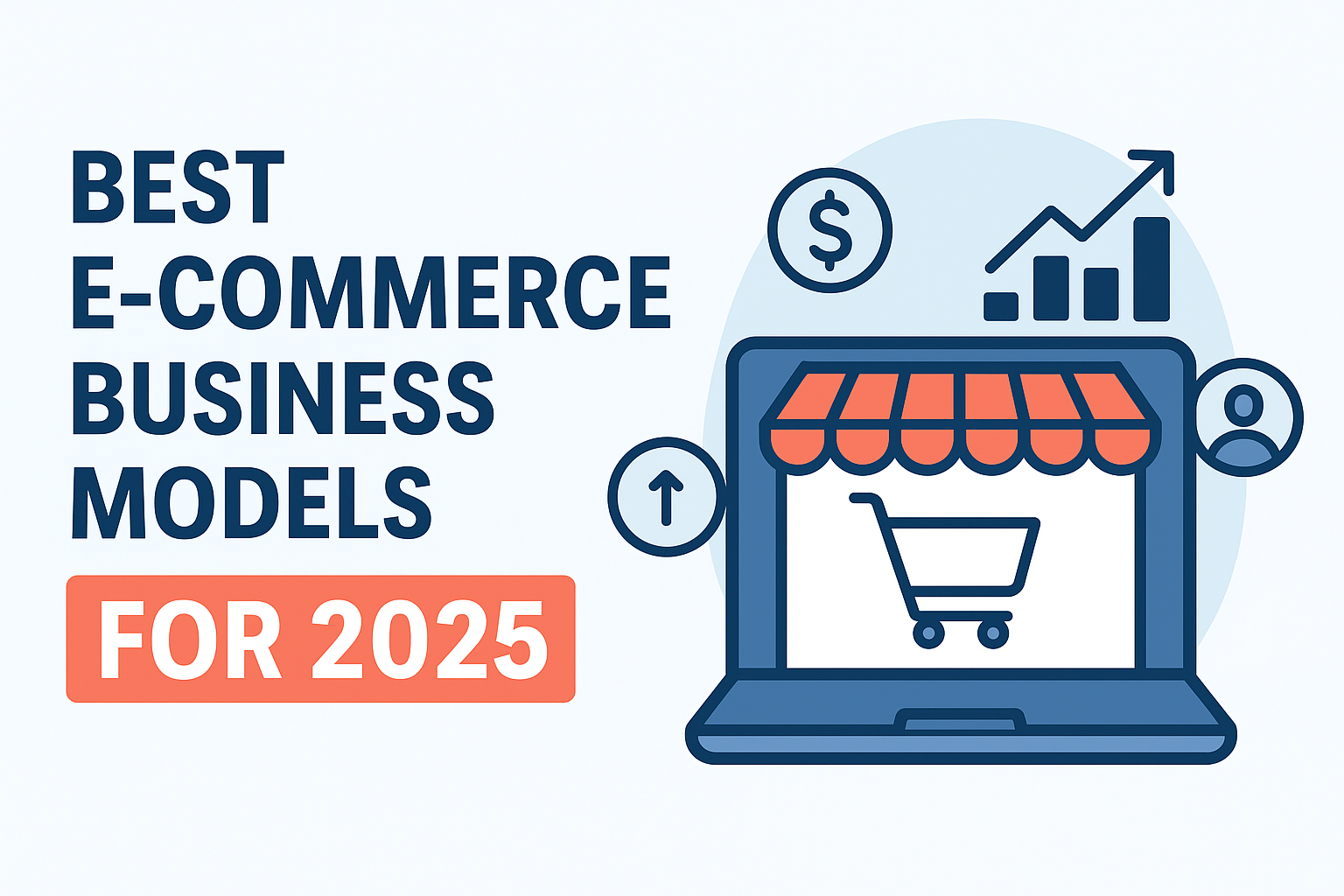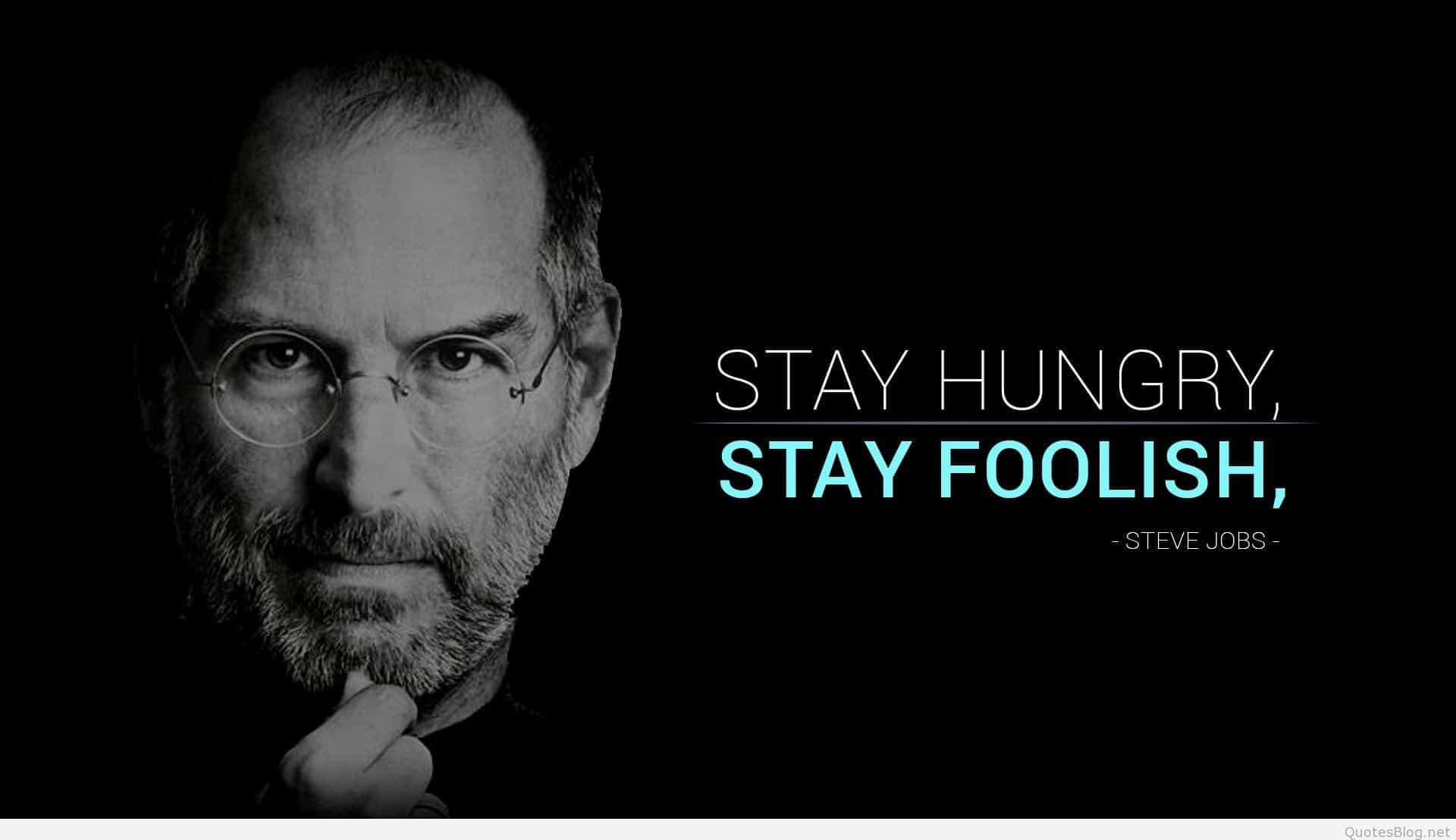Best E-commerce Business Models for 2025 with pros cons and case studies
Best E-commerce Business Models for 2025 with pros cons and case studies
E-commerce is evolving rapidly. New business models are emerging, driven by technology and changing consumer habits.
Choosing the right model is crucial for success. It can determine your reach, profitability, and customer engagement.
In 2025, several e-commerce models will dominate. Each has unique advantages and challenges.
Direct-to-Consumer (DTC) models offer direct customer relationships. Subscription models provide recurring revenue streams.
Marketplaces like Amazon and eBay offer vast audiences. Dropshipping minimizes inventory costs.
White-labeling allows brand customization. B2B models focus on bulk transactions between businesses.
Social commerce leverages social media for sales. Omnichannel strategies integrate online and offline experiences.
Understanding these models is essential. It helps entrepreneurs make informed decisions.
This guide explores the best e-commerce business models for 2025. We’ll discuss their pros, cons, and real-world examples.
By the end, you’ll have a clear understanding of which model suits your business needs.
Understanding E-Commerce Business Models: An Overview
E-commerce business models are the backbone of online selling. These models define how a business operates, generates revenue, and interacts with customers.
The variety of e-commerce models available today shows the adaptability of online retail. This flexibility meets different business needs and consumer preferences.
A well-chosen model aligns closely with a company’s strategic goals. It supports efficient operations, competitive pricing, and effective customer service.
Before choosing a model, it’s essential to understand what each one offers. This involves analyzing market positioning, customer target, and logistics.
Some common e-commerce models include:
- Direct-to-Consumer (DTC)
- Subscription-based
- Marketplace
- Dropshipping
- White/Private Label
- B2B
- Social Commerce
- Omnichannel
Technological advancements influence these models. They are shaped by innovations like AI, machine learning, and mobile technology.
Understanding these models prepares businesses for the future. It equips them to respond to market changes and leverage growth opportunities. As e-commerce evolves, staying informed becomes increasingly vital. This understanding forms the foundation for effective strategic planning.
Key Criteria for Choosing the Best E-Commerce Business Model
Selecting the right e-commerce business model is a crucial decision. It impacts long-term success and growth. Each model has unique features that cater to different business needs and markets.
To make an informed choice, consider several vital criteria. These factors help tailor the e-commerce model to your specific circumstances and goals.
Understanding your target audience is fundamental. Knowing their preferences and buying behaviors shapes your approach. Next, analyze your product types. Certain models suit specific products better, influencing profitability.
Assess your resources, including capital and manpower. Some models require significant initial investment, while others minimize upfront costs. It’s crucial to evaluate logistics capabilities. Distribution efficiency and supply chain management can make or break an e-commerce operation.
Here is a checklist for choosing an e-commerce model:
- Customer demographics and preferences
- Product type and value
- Resource availability
- Logistics and supply chain capabilities
- Market competition
These criteria guide your selection process. They ensure alignment with business objectives and operational capacity. A well-matched model enhances competitiveness and customer satisfaction.
Direct-to-Consumer (DTC) Model
The Direct-to-Consumer (DTC) model is revolutionizing retail. By selling directly to customers, brands bypass traditional retail channels. This approach allows companies to control branding and customer interactions effectively.
DTC offers several advantages. It fosters a close relationship with customers, enabling brands to gather valuable insights. This model also typically results in higher profit margins, as there are no retailer markups.
However, DTC requires substantial marketing efforts. Brands must invest in building awareness and trust. They also need to maintain a strong online presence, often requiring skilled digital marketing teams.
The DTC model suits businesses with unique, high-demand products. Brands can focus on creating tailored shopping experiences, enhancing customer satisfaction. Successful examples include companies in fashion, beauty, and lifestyle sectors.
Key features of the DTC model:
- Direct sales to consumers
- Control over branding and customer data
- Higher profit margins
- Increased marketing responsibilities

Implementing a DTC strategy demands dedication and strategic planning. Success hinges on understanding consumer needs and crafting compelling marketing campaigns. With the right approach, DTC offers lucrative opportunities.
Pros and Cons of DTC
The DTC model provides substantial benefits. Direct engagement with consumers builds loyalty. Higher margins enhance profitability.
However, DTC involves challenges. Effective marketing is essential and often costly. Brands must handle logistics and customer service independently.
Pros:
- Strong customer relationships
- Higher profit margins
Cons:
- High marketing costs
- Complex logistics management
DTC is powerful but demands significant effort. Weighing benefits against challenges is vital for success.
DTC Case Study: Allbirds
Allbirds is a prime DTC success story. Known for sustainable footwear, Allbirds sells directly to eco-conscious consumers. The brand leverages digital channels to communicate its unique value.
Allbirds’ success is fueled by strategic marketing. The company uses social media and influencer partnerships. This approach has fostered a devoted customer base.
Moreover, Allbirds harnesses customer feedback to refine products. This enhances quality and satisfaction. The DTC model allows them to innovate rapidly, retaining their competitive edge.

Subscription-Based E-Commerce Model
Subscription-based e-commerce models cater to convenience-oriented consumers. They allow customers to receive recurring deliveries of products, offering a seamless shopping experience. This model has gained popularity across various sectors, from meal kits to grooming products.
Subscriptions provide steady revenue streams for businesses, enhancing financial stability. They improve customer retention, as subscribers are more likely to stay loyal to a brand. Companies can benefit from advanced demand forecasting, leading to better inventory management.
However, customer churn is a notable challenge. Ensuring ongoing engagement requires maintaining high product quality and variety. Businesses must continuously innovate to meet evolving consumer preferences.
The subscription model is ideal for businesses with consumable or regularly needed products. Successful companies often leverage data analytics to personalize offerings, enhancing customer satisfaction.
Key aspects of the subscription model include:
- Recurring revenue streams
- Enhanced customer retention
- Challenges in managing churn
- Emphasis on product quality and innovation

For companies that can sustain product engagement, subscriptions offer significant growth potential.
Pros and Cons of Subscription Model
Subscription-based models offer enticing advantages. Recurring revenues create predictable financial outcomes. High customer retention bolsters brand loyalty.
Conversely, churn poses a risk. Customer preferences may change, leading to cancellations. Sustaining interest requires constant product improvements.
Pros:
- Recurring revenue
- Strong customer loyalty
Cons:
- Risk of customer churn
- Need for ongoing product innovation
Balancing these factors is crucial for achieving long-term success in the subscription space.
Subscription Case Study: Dollar Shave Club
Dollar Shave Club disrupted the grooming industry with its subscription model. It delivered affordable, high-quality razors directly to consumers’ doors. This innovation challenged traditional retail giants.
By using clever marketing, Dollar Shave Club captured the market’s attention. Humorous advertising campaigns and viral videos played a pivotal role in their growth. These strategies engaged a wide audience and secured a strong subscriber base.
Moreover, Dollar Shave Club expanded its product line beyond razors. This diversification was key to maintaining subscriber interest and reducing churn. The brand’s success story underscores the power of strategic marketing and product variety.

Marketplace Model
Marketplace e-commerce models connect buyers with multiple sellers on one platform. Giants like Amazon and eBay have pioneered this approach, becoming central hubs for consumers and businesses alike.
This model offers buyers a vast selection of products from various sellers. It’s a one-stop shop, simplifying the shopping experience. For sellers, marketplaces provide access to extensive audiences, boosting visibility and sales potential.
However, marketplace environments can be fiercely competitive. Sellers often face challenges like marketplace fees and strict compliance standards. Maintaining distinct branding amidst numerous competitors requires strategic differentiation.
Marketplaces are constantly evolving to improve user experience. Features like personalized recommendations and streamlined logistics enhance consumer satisfaction. Emerging platforms might focus on niche markets, offering tailored experiences.
Consider these aspects of marketplace models:
- Vast product selection
- High competition levels
- Essential for seller compliance and differentiation
- Importance of buyer engagement

Successful marketplace strategies hinge on balancing visibility with competitiveness.
Pros and Cons of Marketplace Model
The marketplace model presents attractive prospects. Sellers can tap into large customer bases and diversify revenue streams. Marketplaces simplify logistics, offering a ready-made platform.
On the flip side, intense competition is a significant drawback. Sellers might struggle to stand out and face hefty fees.
Pros:
- Access to wide audiences
- Simplified logistics
Cons:
- High competition
- Platform fees
Strategic planning is crucial for thriving in competitive marketplaces.
Marketplace Case Study: Etsy
Etsy has carved out a unique position in the marketplace sector. It focused on handmade and vintage items, attracting a niche audience. This specialization enabled Etsy to differentiate itself from broader platforms.
The community-centric approach helped Etsy forge strong connections. Sellers and buyers form tighter-knit networks based on shared interests and aesthetics. This fosters loyalty and repeat business.
Etsy’s emphasis on creativity and individuality resonates with many consumers. The platform provides robust tools for sellers to showcase unique products. Etsy’s success story illustrates how niche focus and community building drive marketplace achievement.

Dropshipping Model
The dropshipping model reshapes traditional retail logistics. It allows retailers to sell products without keeping inventory. In this model, sellers partner with suppliers who ship products directly to customers.
This model offers a low-risk entry into e-commerce. With minimal upfront investment, entrepreneurs can test various products and niches. Flexibility is a primary appeal, letting sellers pivot quickly if trends shift.
Yet, dropshipping is not without its challenges. Dependence on suppliers can lead to supply chain issues. Sellers might struggle with quality control if suppliers fail to meet expectations.
Successful dropshipping requires strong supplier relationships. Sellers need reliable partners to ensure smooth operations. It’s also crucial to focus on marketing and brand building. These factors help differentiate in a crowded market.
Considerations for dropshipping include:
- Low upfront costs
- Supplier dependency
- Importance of robust supplier relationships
- Branding and marketing focus

Positioning a dropshipping business for success demands strategic planning and reliable partners.
Pros and Cons of Dropshipping
Dropshipping offers enticing benefits for newcomers. Minimal initial costs make it accessible, and the flexibility is unmatched. However, dependency on third-party suppliers can pose risks.
Pros:
- Low investment
- High flexibility
Cons:
- Supplier reliability issues
- Limited control over product quality
Navigating the dropshipping space requires vigilance and strategic partnerships.
Dropshipping Case Study: Gymshark
Gymshark’s rise is a notable dropshipping success story. It started as a small operation from a UK garage. Founder Ben Francis leveraged dropshipping to scale rapidly without heavy upfront costs.
Focusing on trendy fitness apparel, Gymshark met a growing demand. Their strategic use of influencer marketing amplified reach and brand visibility. This approach created a strong community of loyal fans.
Gymshark’s emphasis on brand aesthetics and community building set it apart. The combination of dropshipping’s low costs and smart marketing fueled its rapid growth.

White Label and Private Label Models
White label and private label models offer unique opportunities for brand development. Businesses can sell products under their own brand without manufacturing them. This allows for focusing on marketing and brand positioning.
White labeling involves rebranding generic products as your own. It provides flexibility in expanding product lines without hefty investments in production. Private labeling, though similar, usually involves some customization to differentiate the product.
These models enable businesses to enter various markets rapidly. They also allow testing of new product ideas without financial strain. Brands can maintain control over pricing, marketing, and distribution strategies.
Key challenges include dependency on manufacturing partners. Quality control is vital to ensure consistency in customer experience. Additionally, private label products may face competition from original manufacturers.
Considerations for white and private labeling:
- Brand creation without manufacturing
- Fast market entry
- Control over pricing and marketing
- Dependency on manufacturers for quality

White and private labeling can be a gateway to scalability and market diversification.
Pros and Cons of White/Private Label
White and private label strategies offer control and flexibility. They allow businesses to establish their brand identity quickly. However, they come with potential risks.
Pros:
- Rapid brand establishment
- Flexible product line expansion
Cons:
- Quality control dependency
- Manufacturer competition
Weighing these pros and cons can guide strategic decision-making in brand development.
White/Private Label Case Study: Native
Native, a personal care brand, showcases the power of private labeling. It launched with a single natural deodorant formula. Focusing on simple, effective ingredients won over health-conscious consumers.
Native stood out with sleek branding and transparent marketing. Their commitment to non-toxic ingredients appealed to a growing audience. This emphasis on quality built a loyal customer base.
As demand grew, Native expanded its product line. They introduced body washes and toothpastes, maintaining brand consistency. Their success led to acquisition by Procter & Gamble, highlighting the model’s scalability.

B2B E-Commerce Model
The B2B e-commerce model is distinct from consumer-facing models. It focuses on transactions between businesses, providing bulk quantities at discounted rates. This approach supports various industries like manufacturing and wholesale.
B2B transactions often feature larger order values compared to B2C models. This is due to the nature of bulk purchases for operational needs. Companies engage in longer sales cycles, requiring tailored solutions and negotiations.
E-commerce platforms for B2B transactions offer customizable catalogs. They streamline the purchasing process, allowing businesses to access inventory and pricing efficiently. Tools like automated ordering and invoicing are essential features.
Building strong client relationships is crucial in the B2B realm. Trust and communication play significant roles in securing long-term contracts. These partnerships contribute to consistent revenue streams.
In recent years, technology has significantly transformed B2B operations. Integration with CRM systems and advanced data analytics enhances customer experiences. These innovations enable informed decision-making and proactive service.
- Focus on bulk transactions
- Longer sales cycles
- Enhanced CRM integration

Pros and Cons of B2B Model
The B2B model supports businesses’ core functionalities. It offers substantial opportunities but also involves challenges.
Pros:
- Higher transaction values
- Long-term client relationships
Cons:
- Lengthy sales cycles
- Complex logistics
Understanding these factors helps in leveraging the B2B model efficiently.
B2B Case Study: Alibaba
Alibaba exemplifies success in the B2B e-commerce arena. The platform connects global buyers with Chinese manufacturers. It simplifies sourcing of products across diverse industries.
Alibaba’s user-friendly interface empowers businesses to find suppliers with ease. Negotiation tools and messaging functions facilitate seamless transactions. This connectivity is pivotal in catering to large-scale procurement demands.
The company has continued to innovate, incorporating AI to predict market trends. It employs data-driven insights to match buyers with relevant suppliers. Such advancements keep Alibaba competitive in the dynamic B2B landscape.

Social Commerce Model
The social commerce model merges e-commerce with social media platforms. It lets businesses engage with consumers where they spend time. This model leverages social proof through likes and shares.
Social commerce thrives on visual content and influencer marketing. Platforms like Instagram and Pinterest transform user experiences into shopping opportunities. Brands showcase products through appealing images and stories.
Consumers enjoy seamless purchasing directly within social feeds. This reduces friction and elevates the buying experience. Integration of payment gateways ensures smooth checkout processes.
A key benefit of social commerce is personalized marketing. Algorithms target potential buyers based on their interests and behavior. This tailored approach increases conversion rates and brand loyalty.
Social commerce is rapidly evolving. New features, like shoppable posts, enhance interactivity and sales potential. Businesses that quickly adapt enjoy a competitive edge.
- Visual content is crucial
- Influencer partnerships drive engagement
- Shoppable posts enhance user experience

Pros and Cons of Social Commerce
Social commerce offers unique advantages and some hurdles.
Pros:
- Direct engagement with consumers
- Powerful visual storytelling
Cons:
- Dependence on platform algorithms
- Potential for overwhelming competition
Adapting strategies in response to these factors is crucial for success in this dynamic model.
Social Commerce Case Study: Glossier
Glossier exemplifies innovative use of social commerce. The beauty brand built its identity using social media to foster community. It transformed customer feedback into product development.
Glossier engages users with authentic content. Customers feel connected to the brand through shared experiences. This engagement fosters trust and drives sales.
The brand’s user-driven approach has led to exceptional growth. Glossier’s success illustrates the power of leveraging social platforms to influence purchasing decisions.

Omnichannel Retail Strategies
Omnichannel retail integrates online and offline sales channels. This strategy creates a seamless customer experience. It ensures consistent engagement across various touchpoints.
Shoppers can begin their journey on one channel and finish on another. For example, they might research products online, but complete the purchase in-store. This flexibility caters to modern consumers’ preferences.
Omnichannel retail requires robust infrastructure. Businesses need synchronized inventory management and data sharing systems. This alignment minimizes friction and improves efficiency.
Customer satisfaction is often higher in omnichannel models. Customers appreciate the freedom to interact in their preferred method. Companies benefit from improved brand loyalty and repeat purchases.
The investment in technology and logistics can be substantial. However, the reward is a cohesive and adaptable retail presence. Firms can meet shifting consumer demands with grace.
- Unified marketing strategy
- Streamlined customer service
- Integrated inventory systems

Pros and Cons of Omnichannel
Omnichannel strategies offer both benefits and challenges.
Pros:
- Enhanced customer experience
- Increased brand loyalty
Cons:
- High implementation costs
- Complex coordination
Businesses must weigh these factors to maximize their retail potential effectively.
Omnichannel Case Study: Warby Parker
Warby Parker exemplifies the successful execution of omnichannel retail. Initially, an online-only brand, it expanded into brick-and-mortar locations. This move offered customers the chance to try products before buying.
Their stores complement the online experience. Customers can leverage home try-ons and then visit a store for purchase. The blend of channels boosts consumer confidence and decision-making.
By aligning digital and physical channels, Warby Parker enhances service quality. This strategy has significantly contributed to their brand growth and customer satisfaction.

Emerging and Hybrid E-Commerce Models for 2025
As we approach 2025, new e-commerce models are emerging. These hybrids combine elements from traditional and digital frameworks. They cater to increasingly tech-savvy consumers and evolving market demands.
Hybrid models are flexible and innovative. They leverage AI and machine learning to personalize customer experiences. This technological integration tailors marketing efforts and product recommendations.
One such model merges retail and subscription services. Products are available for one-time purchases or regular shipments. This option offers convenience and appeals to a wider audience.
Another trend is integrating social commerce with marketplaces. Brands use social media to engage customers directly. This interaction builds community while driving traffic to larger selling platforms.
The success of these models depends on understanding consumer behavior. Companies must align their strategies with user preferences. This proactive approach keeps them ahead in a competitive landscape.
- AI-driven personalization
- Flexible purchasing options
- Social media integration

How to Select the Right E-Commerce Model for Your Business
Choosing the best e-commerce business model is crucial. It depends on your goals, resources, and target audience. A thorough analysis helps align the model with business objectives.
Begin by understanding your customer base. Knowing their purchasing behaviors and preferences aids in selecting the most effective model. Research market trends and buyer personas.
Assess your resources, including budget and technology. Some models, like omnichannel retail, require significant investment. Others, such as dropshipping, demand lower financial commitments initially.
Evaluate competitive strategies to pinpoint strengths and weaknesses. This evaluation helps in refining your business model. Consider potential growth and scalability when making your choice.
- Identify target customers
- Analyze resource availability
- Evaluate market competition
- Anticipate growth opportunities

Future Trends Shaping E-Commerce Business Models
E-commerce evolves with technology and consumer habits. Future trends will continue to redefine business models. Staying current is essential for success.
Artificial intelligence and machine learning drive personalization. They enable customized shopping experiences, which consumers increasingly expect. Predictive analytics further enhance these tailored interactions.
Sustainability is gaining traction. Consumers prefer brands with eco-friendly practices. Companies are adapting by offering green products and transparent supply chains.
Mobile commerce continues to rise. With more people shopping via mobile devices, businesses must optimize for smartphones and tablets. This trend impacts website design and payment options.
Key future trends include:
- Artificial Intelligence in personalization
- Sustainability and ethical practices
- Growth in mobile commerce

Key Takeaways and Action Steps
Successfully navigating the e-commerce landscape requires understanding diverse business models. Each model offers unique advantages and challenges. Tailoring strategies to fit specific needs is vital.
Leverage data analytics to gain insights into consumer behavior. This information aids in refining business models. Stay informed about industry trends to remain competitive.
To act effectively, consider these steps:
- Evaluate current business model performance
- Research emerging trends and technologies
- Implement technology for data-driven decisions
Adapting is crucial in the ever-changing e-commerce environment. Continuously assess and refine strategies. A proactive approach ensures sustained growth and relevance in the dynamic digital marketplace.
Frequently Asked Questions (FAQ)
1. What are the best e-commerce business models?
Selecting the best e-commerce model depends on business goals. Options include DTC, subscription, marketplace, dropshipping, and more.
2. How does one choose an e-commerce model?
Assess customer needs, company resources, and market trends. Compare each model’s pros and cons.
3. What is the most profitable e-commerce model?
Profitability varies by industry and execution. DTC and subscription models often yield high margins.
4. Are these models suitable for startups?
Yes, many models suit startups. Dropshipping and marketplace models minimize initial costs.
5. How can I stay competitive in e-commerce?
Stay informed on trends. Use analytics for strategic decisions. Innovate based on customer feedback.
6. Is e-commerce sustainable long-term?
Yes, if adaptable to change. E-commerce evolves with technology and consumer behavior.












































